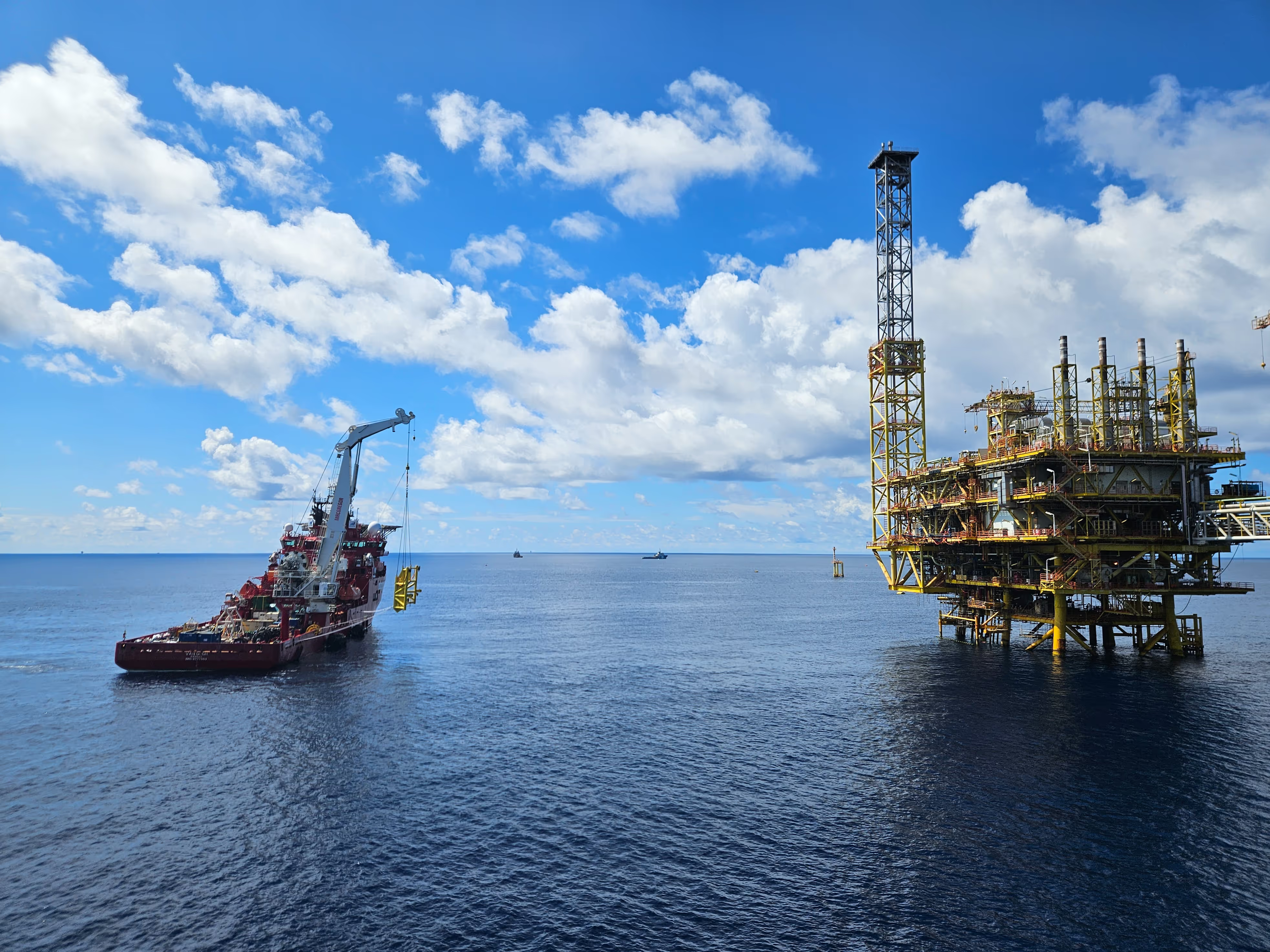Case

Allseas awarded Conbit an extensive platform preparation scope at the Tyra field. They need to prepare the topsides for a single-lift removal by the Pioneering Spirit vessel. This multi-disciplinary project was carried out in close cooperation with Allseas.
Watch how we prepare and execute
Watch how we prepare and execute
Tyra platform
The Tyra platform has been the core infrastructure of Denmark’s energy for 30 years. However, the subsidence of the depleted reservoirs caused the platform to sink. As a result, it requires a field for decommissioning and redevelopment.
After Conbit’s preparation, more than 27,000 tons of platform facilities from the North Sea’s Tyra gas field were safely transferred to the M.A.R.S. recycling yard in Frederikshavn. It is expected to recycle 95 percent of the old facility.
The effect of COVID-19 on the project
The offshore decommissioning preparation scope at the Tyra field took place between May and August 2020. The outbreak of COVID-19 impacted this project significantly. Mobilizing a 60-people crew from all over Europe to Denmark was already challenging even without all the COVID measures. The regulations in the different EU states made it even more complex. However, Conbit proved to be very effective in planning the mobilization of its crew.
Cutting and welding
The project scope required the use of different cutting techniques. Conbit used blow torches, diamond wire cutting, and hot cutting methods. They also deployed a semi-remote blow torch machine to cute a large diameter monopile.
Welding was also necessary at the topsides to fasten the modules, create reinforcement, and reinstate pad eyes. Below deck, items needed to be secured by welding, subject to thorough quality control.
Rigging and rope access
Rigging and lifting are some of the core competencies of Conbit’s operations. Conbit’s engineers prepared the most effective lifting methods below the topsides. Many components had to be rigged from underneath the topsides. Conbit created long traveling routes until all components were within crane reach. They carefully designed it not to affect the project schedule.
For all works below the topsides, Conbit used rope access techniques. Welding and cutting activities were performed using these techniques. Still, rope access was also the preferred method for the heavy lifting and rigging work packages, as it reduced the requirement for scaffolding to be constructed, saving time.
PRoject case study pdf
Download the PDF of this project case study here.
Thanks for leaving your email address. You can now download the requested case study
Oops! Something went wrong while submitting the form.
No items found.
Related Cases
Related Services
Maritime
Oil & Gas
Petrochemical
Wind
Lifeboat Davit Installation Services
Onshore & Offshore
Oil & Gas
Petrochemical
Wind
Maritime
Living Quarter Installation Services
Onshore & Offshore
Oil & Gas
Petrochemical
Wind
Maritime
Caisson Replacement Services
Onshore & Offshore
Maritime
Oil & Gas
Petrochemical
Crane Replacement Services
Onshore & Offshore
Oil & Gas
Petrochemical
Flare Tip Replacement Services
Onshore & Offshore
Maritime
Wind
Oil & Gas
Inspections
Onshore & Offshore
Oil & Gas
Petrochemical
Wind
Modification
Onshore & Offshore
Oil & Gas
Petrochemical
Wind
Maintenance
Onshore & Offshore
Oil & Gas
Wind
Petrochemical
Maritime
Installation
Onshore & Offshore
Oil & Gas
Petrochemical
Decommissioning
Onshore & Offshore
Contact
We're here to answer your questions
Do you have any technical questions, general enquiries or do you need additional information? Don’t hesitate to contact our experts. With their expertise and experience in lifting services, they will gladly help you.
You can contact us by phone or email. We’re looking forward to your questions!
You can contact us by phone or email. We’re looking forward to your questions!
%20copy.avif)












.png)
-1.avif)


